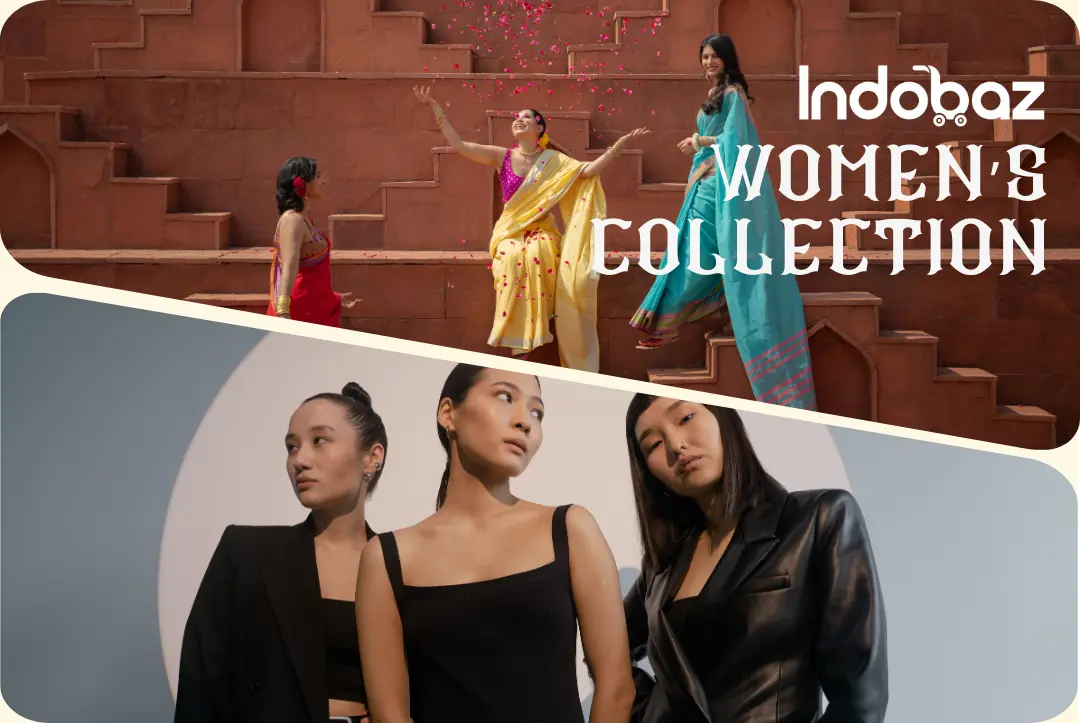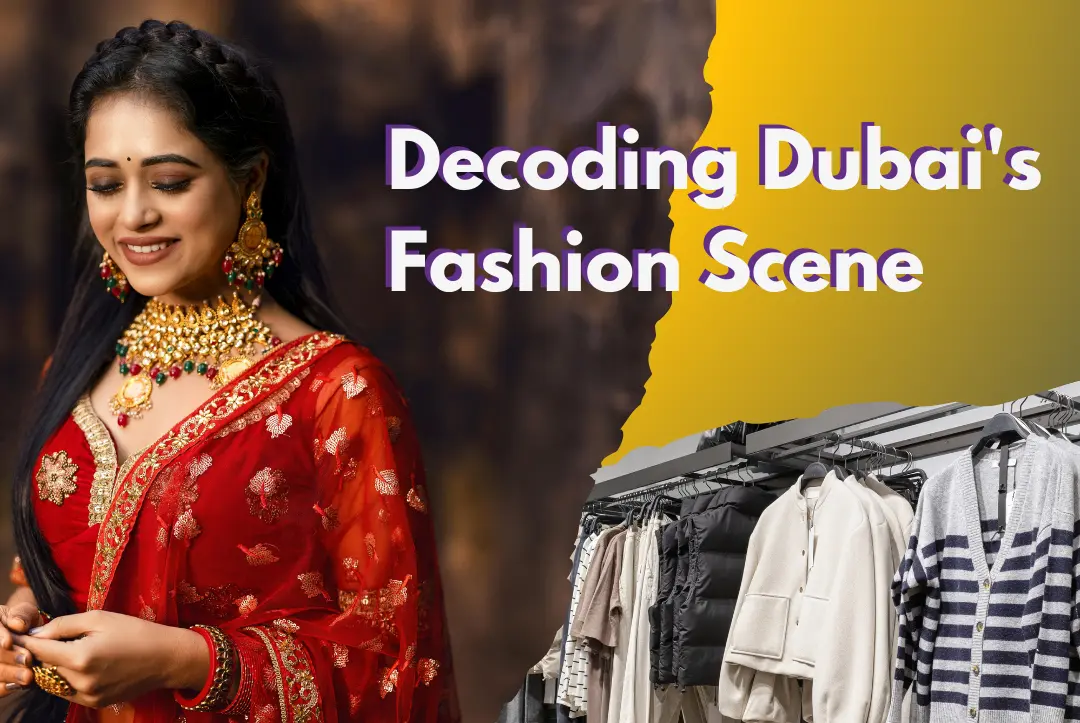Navigate the diverse world of men's fashion in the UAE with this comprehensive guide. Discover essential wardrobe staple...
The Timeless Elegance of Indian Sarees: A Guide to Styles and Drapes
Introduction
The Indian saree, a six-yard wonder, is a timeless piece of clothing that has captivated the world with its elegance and grace. This versatile garment can be draped in numerous ways, making it suitable for various occasions, from casual outings to formal events. In this blog post, we'll delve into the different styles and draping techniques of Indian sarees, helping you embrace the beauty of this traditional attire.
Different Styles of Indian Sarees
Banarasi Saree:
Known for its intricate gold and silver zari work, Banarasi sarees are a symbol of luxury and heritage.
Originating from the holy city of Varanasi, Banarasi sarees are renowned for their opulent beauty . These sarees are among the finest in India and are known for their gold and silver brocade or zari, fine silk and opulent embroidery . Woven from fine silk and adorned with intricate gold and silver zari work, these sarees are a symbol of luxury and heritage . Motifs like floral patterns, paisley designs, and intricate jali work are common features . Often chosen for weddings and special occasions, Banarasi sarees exude a regal charm.
The Mughal influence on Banarasi sarees is evident in the incorporation of paisley, peacock, and floral patterns, adding a touch of royal elegance to these exquisite garments . To ensure authenticity, look for the GI certification, which guarantees that the saree is made in one of the six identified districts of Uttar Pradesh . Banarasi sarees hold a special place in Indian bridal traditions, often becoming cherished heirloom pieces passed down through generations.
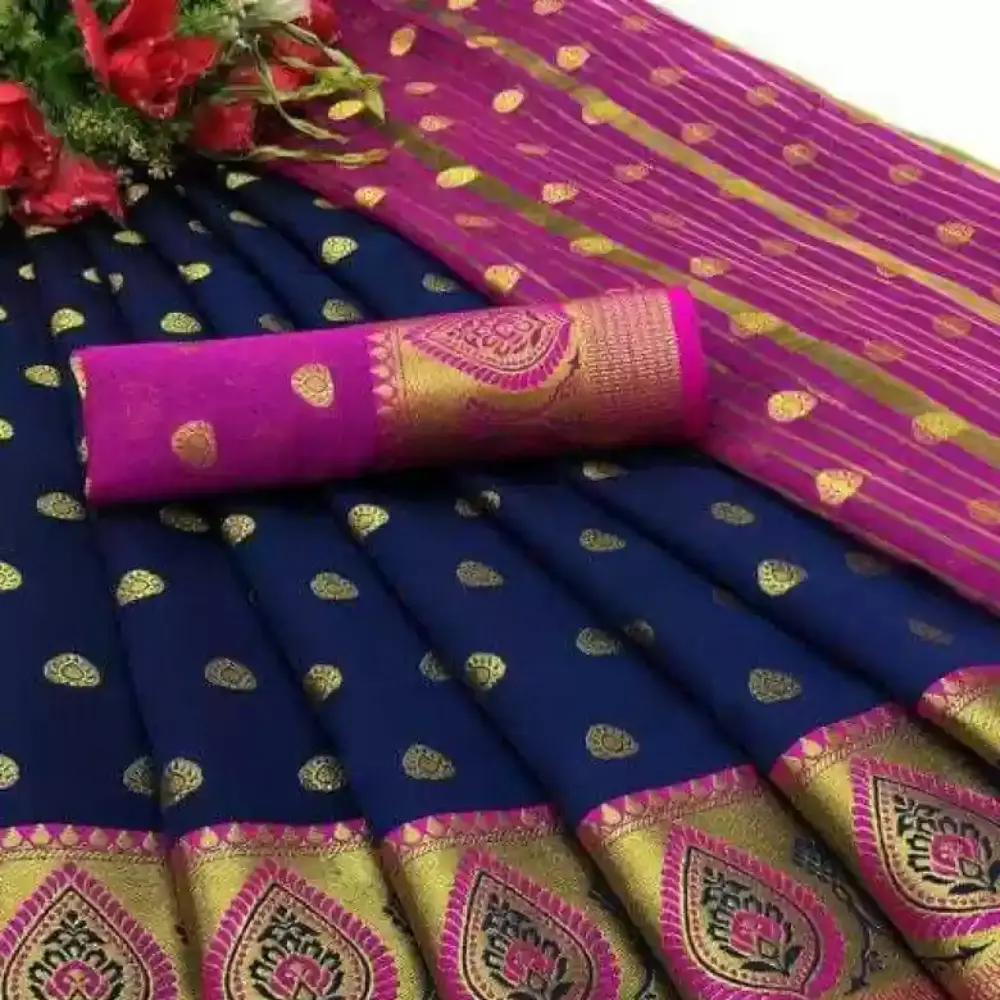
Kanjeevaram Saree:
These South Indian silk sarees are renowned for their rich colors and intricate designs.
Hailing from the Kanchipuram region of Tamil Nadu, Kanjeevaram sarees are celebrated for their vibrant colors, rich silk, and intricate designs . These sarees are a popular choice of bridal attire in South India . They are distinguished by their contrasting borders and pallu, often depicting temple motifs, mythological figures, and geometric patterns . A staple for South Indian weddings and festivals, Kanjeevaram sarees are an embodiment of tradition and grandeur. The silk used in Kanjeevaram sarees is so durable that it can be washed at home .
A unique aspect of Kanjeevaram sarees is the Korvai weaving technique, where the border is woven separately and then attached to the main body of the saree . This intricate process results in a "pitni," a fine line where the border is attached, showcasing the craftsmanship of the weavers . The symbolism and stories woven into the motifs of Kanjeevaram sarees connect them to mythology and regional culture, making each saree a piece of art with a deeper meaning .
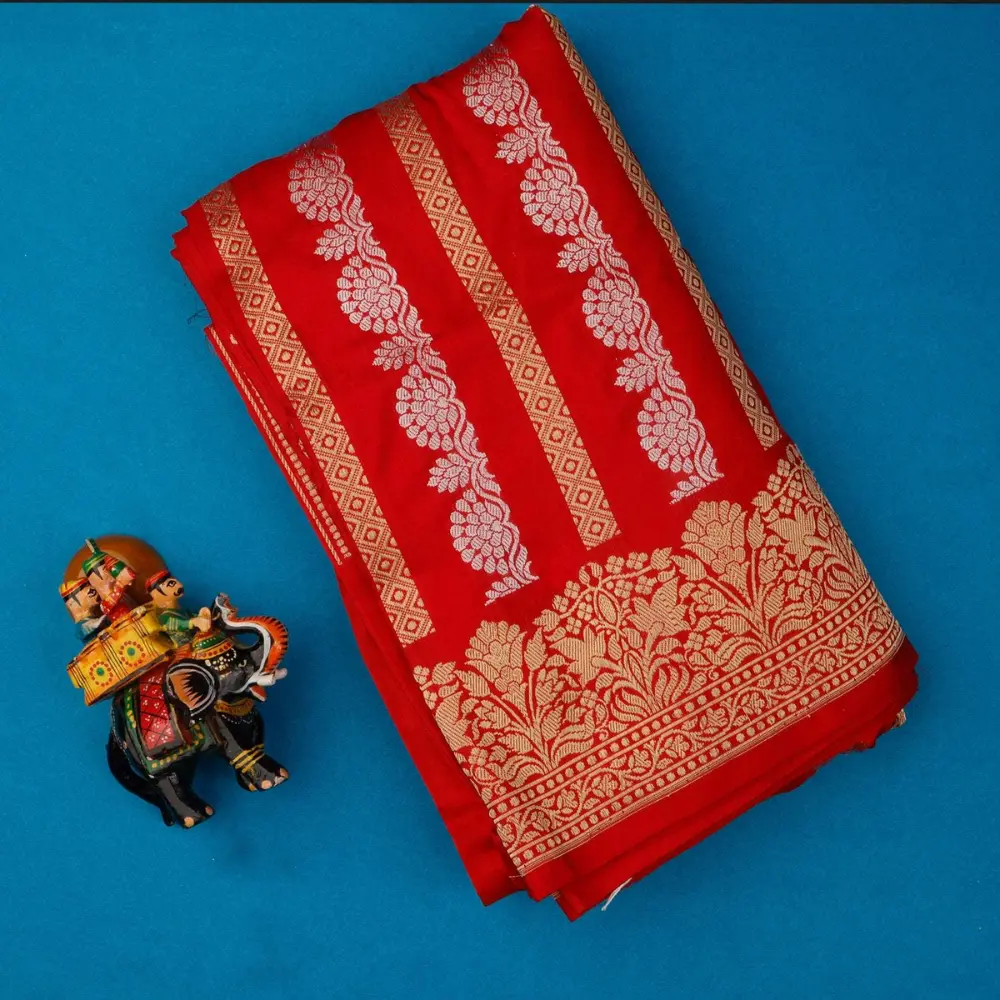
Patola Saree:
Handwoven with intricate double ikat patterns, Patola sarees are a masterpiece of textile art.
These sarees, woven in Patan, Gujarat, are a testament to the exquisite craftsmanship of double ikat weaving . Each Patola saree is a masterpiece of textile art, with vibrant colors and intricate geometric patterns that seem to dance across the fabric . The process is incredibly time-consuming, with each thread meticulously dyed before weaving, resulting in a saree that is both luxurious and unique . Due to their intricate weaving and high cost, Patola sarees are often considered heirloom pieces and are worn on special occasions.
Traditionally, natural dyes like catechu, indigo, and turmeric were used to achieve the vibrant colors of Patola sarees, further emphasizing the traditional craftsmanship involved . There are different types of Patola sarees, each with its distinct motifs. For example, the Pan Bhat features betel leaf motifs, while the Nari Kunjar Bhat showcases floral designs alongside elephant motifs . The time-consuming and intricate double ikat weaving process positions Patola sarees as a testament to the patience and skill of the artisans .
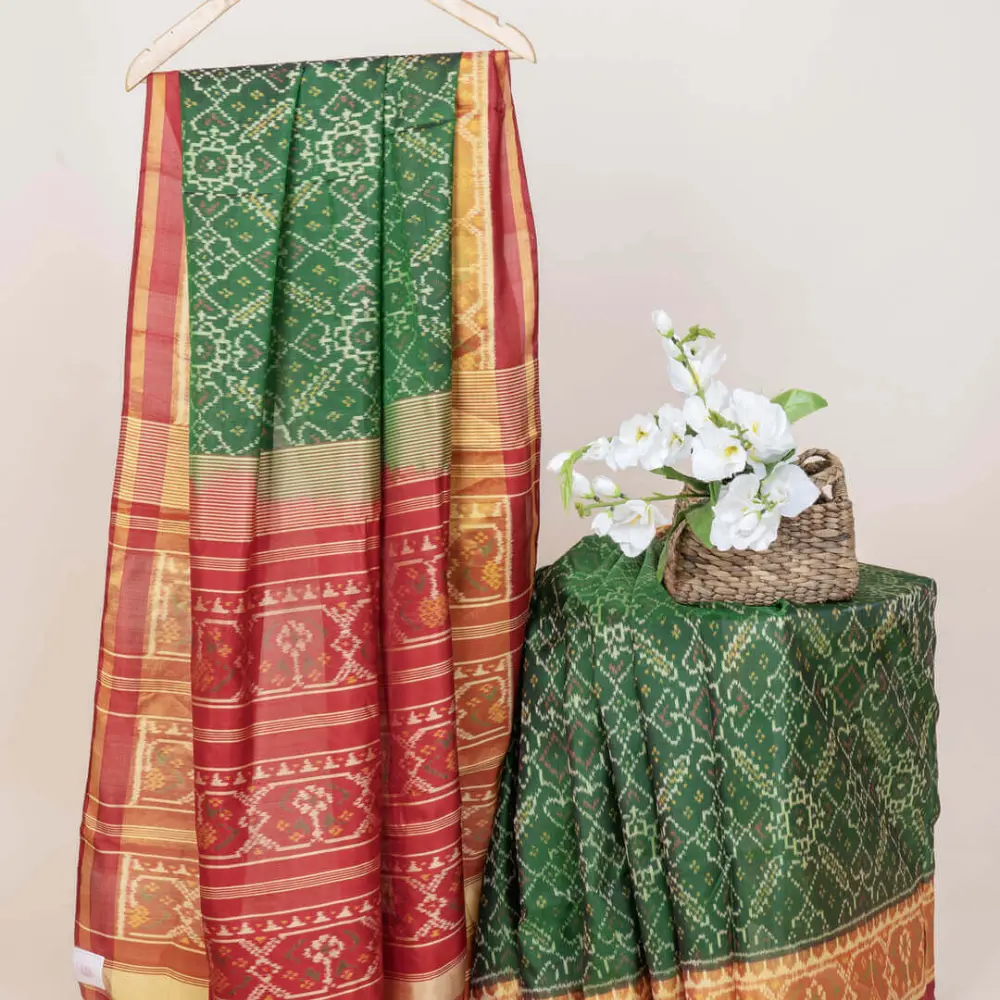
Chanderi Saree:
Lightweight and airy, Chanderi sarees are perfect for summer wear.
Woven in the town of Chanderi in Madhya Pradesh, these sarees are known for their sheer texture, lightweight feel, and delicate designs . Chanderi sarees are crafted from fine silk and cotton, often adorned with subtle zari work, floral motifs, and buti designs . Their airy and sheer quality makes them perfect for summer wear and casual occasions. The Chanderi sarees were known as 'woven air' for their delicate structure and a transparent look .
Historically, Chanderi sarees were highly regarded, with mentions dating back to the time of Mughal emperor Jahangir . However, the demand for Chanderi sarees has declined due to industrialization and the pandemic, posing challenges to this traditional craft . The unique "woven air" quality of Chanderi sarees emphasizes their lightness and breathability, making them ideal for summer wear.
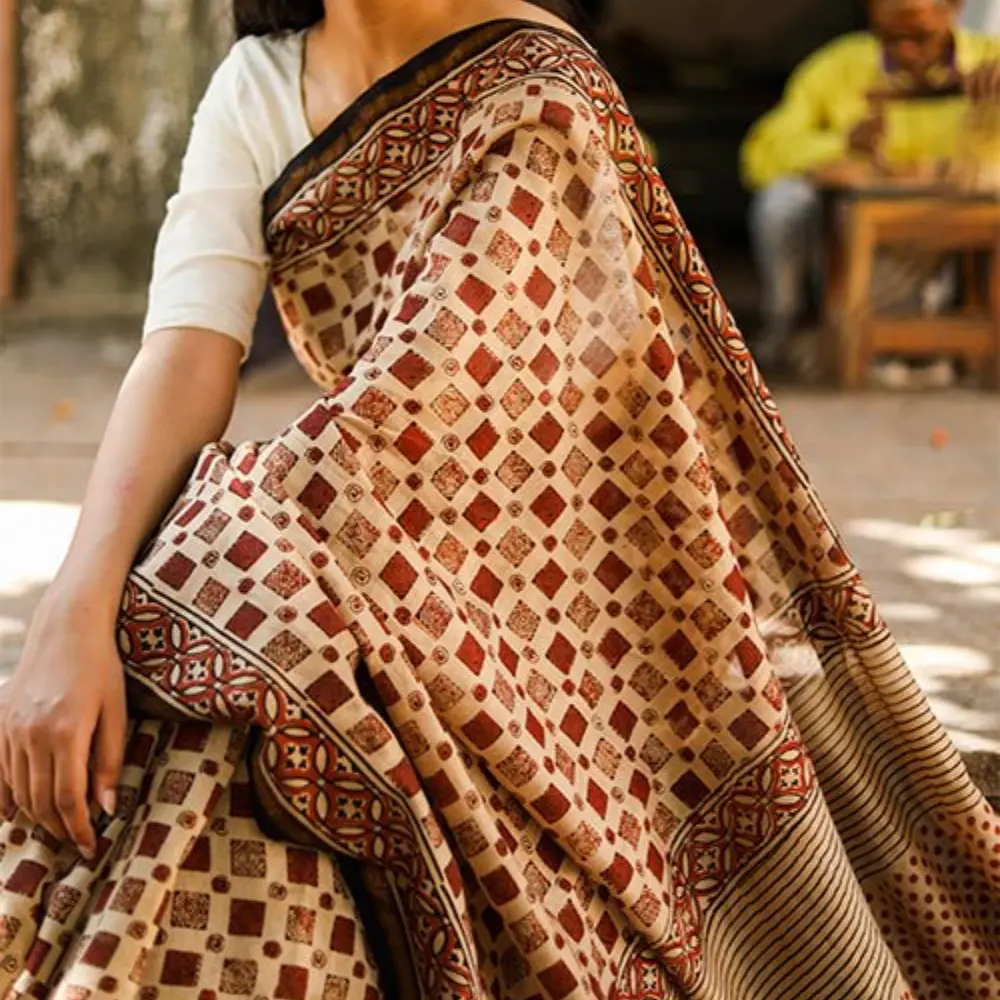
Bengal Silk Saree:
Known for their fine texture and delicate designs, Bengal silk sarees are a classic choice.
With their roots in West Bengal, Bengal silk sarees are cherished for their fine texture, lustrous sheen, and delicate designs . These sarees are typically woven from pure silk and are known for their beautiful drape . They often feature intricate embroidery, floral patterns, and traditional motifs . Bengal silk sarees are a versatile choice, suitable for both casual and formal events.
Within the category of Bengal silk sarees, there are various types, each with unique characteristics. Murshidabad silk sarees are known for their softness and vibrant colors, while Kantha sarees feature intricate hand embroidery . Baluchari sarees, a type of Bengal silk saree, are particularly renowned for their historical and cultural significance. They often depict scenes from mythology, daily life, and even historical events, such as the lives of the Nawabs and British officers during the Mughal and British eras.
Draping Techniques
Nivi Style:
Originating in Andhra Pradesh, the Nivi style is the most common and widely recognized saree draping technique. It involves tucking the saree into the petticoat, creating neat pleats in the front, and draping the pallu over the left shoulder. This style is known for its elegance, versatility, and ease of wear, making it suitable for various occasions.
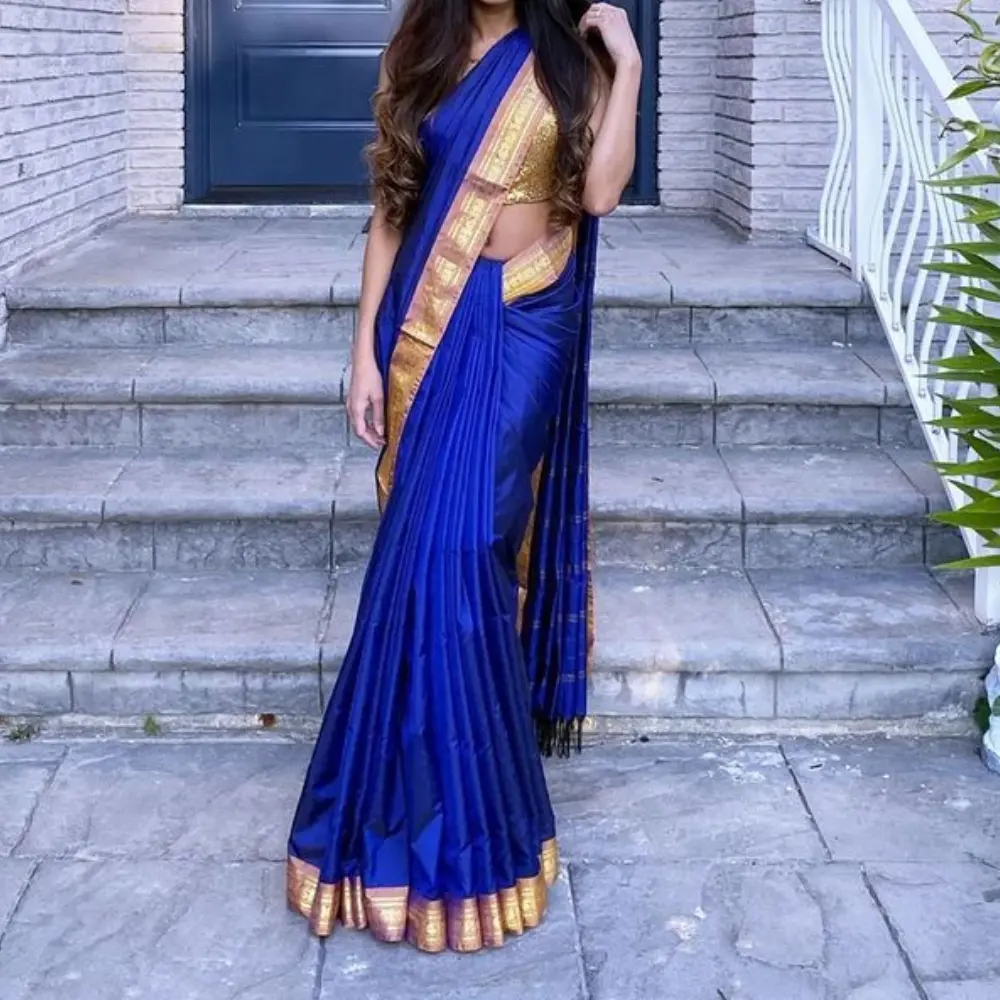
Bengali Style:
This style, unique to West Bengal, is characterized by its flowing pleats and graceful drape. The saree is wrapped around the waist, with the pallu brought around the body and draped over the left shoulder, creating a distinct box pleat in front. Bengali style is often adorned with a key ring attached to the pallu for a traditional touch.

Gujarati Style:
Popular in Gujarat, this style is known for its simplicity and elegance. The saree is draped in a similar manner to the Nivi style, but the pallu is brought over the right shoulder instead of the left, and is then tucked in at the back. This style is often preferred for its comfort and ease of movement, making it suitable for everyday wear.

Maharashtrian Style:
This style, unique to Maharashtra, involves a distinctive way of pleating the saree and draping it around the waist. The saree is draped shorter than usual, resembling a dhoti, with the pallu tucked in at the back. This style is often worn with a traditional nose ring and is associated with festivals and cultural events.

Styling Tips for Indian Sarees
Accessorize wisely:
Choose accessories that complement the saree's color and design. For instance, a Kanjeevaram saree with intricate gold zari work can be paired with gold jewelry, while a Chanderi saree with delicate floral motifs might look best with pearl or silver accessories. Statement jewelry, like a necklace or earrings, can enhance the overall look.
Hairstyle:
Opt for elegant hairstyles like a bun or a sleek ponytail o complement the saree's grace. A traditional updo with flowers can complement a Banarasi saree for a wedding, while a simple braid might be more suitable for a casual outing in a Bengal silk saree.
Footwear:
Wear comfortable footwear like heels or flats, or traditional juttis that match the saree's style. Heels can add height and elegance to your look, while juttis provide a traditional touch. Choose footwear that complements the saree's color and embellishments.
Confidence is key:
Wear your saree with confidence and grace, allowing your personality to shine through. Ultimately, the best way to style a saree is to choose what makes you feel comfortable and beautiful.
Conclusion
The Indian saree is more than just a garment; it's a symbol of cultural heritage, artistry, and personal style. From the opulent Banarasi sarees to the lightweight Chanderi sarees, each style tells a story and reflects the rich traditions of its region. By understanding the different styles, draping techniques, and styling tips, you can embrace the beauty and versatility of this timeless attire. Whether you're attending a wedding, a festival, or a casual gathering, a saree can make you feel confident, elegant, and connected to India's vibrant culture. So, go ahead and drape a saree, and let your elegance shine through.
Share:
 English
English



